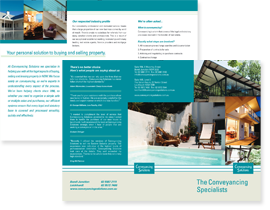Conveyancing Solutions for Home Buyers and Selling Your Home in Sydney and Macathur Areas
Buying or selling first?
A common question from people looking for a new home is: should I sell my current home now or buy my new home first? The answer can be difficult.
If you sell before buying your new home, you may find it difficult to find the perfect property and have to settle for something that doesn’t quite meet your needs.
If you buy first, you may have to sell your current home quickly, which may not be as profitable as you anticipated. Worse still, you may need a bridging loan while you wait to sell your current home.
Let’s explore the pros and cons of both options.
Selling first
- If you sell before buying:
- It’s easier to hold out for the highest price for your current property.
- There’s no need for a bridging loan.
- It’s easier to decide how much you can spend on your new home.
- You can arrange for an extended settlement period to give yourself more time to find a new home.
There are pitfalls for selling first, including:
- You may not find the perfect home before settlement on your current home.
- If it takes you too long to find the ideal home, property prices could increase while you are looking.
Buying first
If you buy before selling:
- You only need to move once.
- You can take as long as you need to find your new home.
There are pitfalls for buying first, including:
- You won’t know exactly how much your current home will sell for, and this could make it difficult to decide how much you can spend on your new home.
- You may have to accept less for your current home to sell it in time for settlement on your new home.
- If your current property fails to sell, you may need a bridging loan.
Bridging Loans
If you decide to buy first, then you may need a bridging loan to cover the time that you own both properties. Bridging loans can simplify the process and remove the stress, but they can be expensive if you don’t have the right lender.
Like other home loans, you can choose between fixed and variable rates. These loans have a shorter term than a traditional home loan, usually from 6 to 12 months.
Depending on your financial situation, you may pay a slightly higher interest rate on a bridging loan; it depends on how risky the lender considers your position to be. If you borrow less than 80% of the value of both properties combined, you will avoid paying lender’s mortgage insurance and save thousands of dollars.
Planning makes the transaction easier
It’s not unusual to get a lower sales price for your home than your real estate agent originally quoted so it’s a good idea to go over the figures. Also, don’t forget to take into account the fees and charges that accompany all property transactions. Keeping track of your finances can be confusing, but it’s well worth the effort.
Consider your contract settlement terms. Ideally, they will align, so you can settle both properties simultaneously. Settlement periods of 60 or 90 days can help to line up the transactions. If they don’t,you can always enquire about a leaseback option with the buyer.
Selling and buying property can be stressful, but knowing your options will ensure that you are not forced to buy or sell. Benefit from the experience your advisors have to offer and speak to your local real estate agent, conveyancer or mortgage broker. They will be delighted to help.
We help clients with property transactions every day.
Give us a call if you have any questions.


